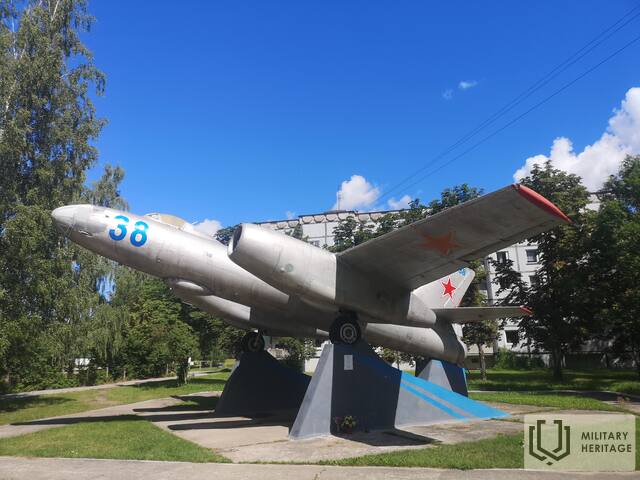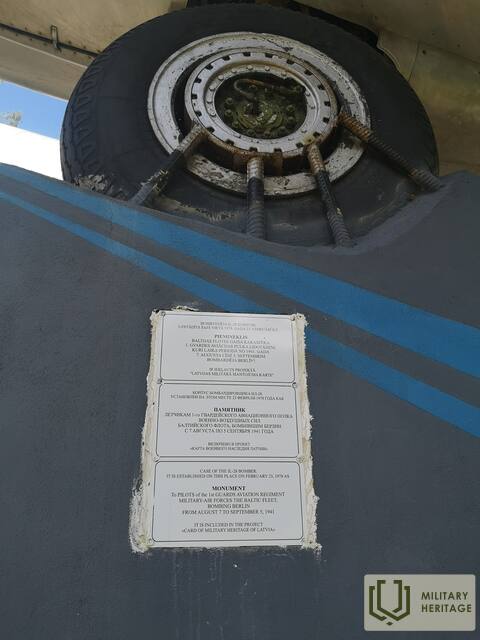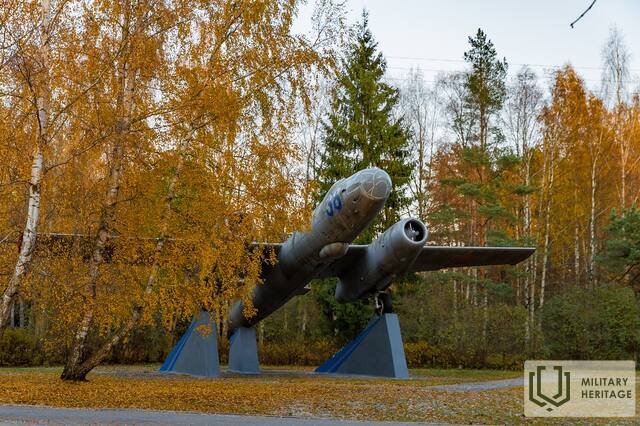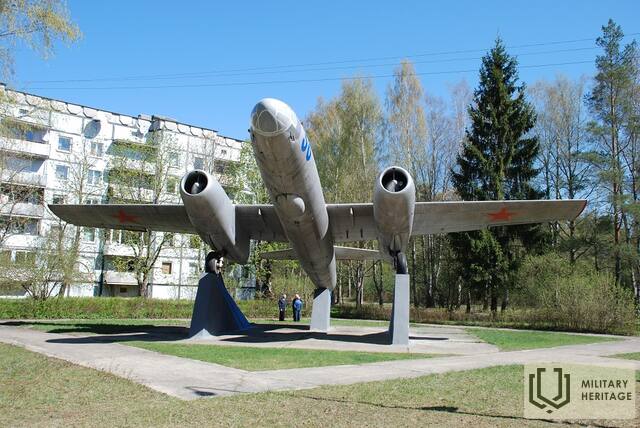Skulte airplane IL-28 Military equipment

Located in the village of Skulte in Mārupe municipality, near Riga International Airport.
Skulte was one of the model villages created for Soviet military personnel. An aviation unit was located there, which carried out the bombing of Berlin and other cities in 1941, and also participated in the occupation of the Baltic States. In 1978, an environmental object - an IL-28 aircraft - was installed there to highlight the merits of Soviet Army pilots in World War II.
After the war, the Soviet Union continued its active armament policy. The IL-28 was the first, most widely produced Soviet jet bomber. The first serial atomic bomb, the RDS-4 ("Tatyana"), was dropped from the same model in 1953 to test the army's ability to launch an attack after a nuclear explosion. The aircraft had various modifications. During tests, it reached a speed of 906 km/h, carrying several tons of cargo and making a flight of 2,445 km. It was piloted by a crew of 3 people.
The plane is not only a witness to military heritage, but also a symbol of ideology. In 2010, to celebrate the victory of the Soviet Army over Germany, the plane was restored. There have also been several unsuccessful attempts to dismantle it as an object glorifying the Latvian occupation regime. This was successful in 2022, when the plane was moved.
Currently, the aircraft can be viewed nearby at the Riga Aviation Museum in Skulte, as well as get an idea of the village built for Soviet Army military personnel.
Used sources and references:
Antonevičs, M. The “cult place” of Soviet military pensioners in Mārupe municipality. La.lv, 2012. Available: https://www.la.lv/padomju-militaro-pensionaru-kulta-vieta-marupes-novada-2 [accessed 9.3.2021.].
Upmalis, I. Latvian-USSR military base. 1938-1998: materials and documents on the presence of the Soviet army in Latvia and its withdrawal. Riga: Zelta grauds, 2006.
Your comments
Related timeline
Related topics
Related stories
Skulte military bomber
The article in the newspaper vividly demonstrates the situation in modern Latvia, when in many places environmental objects glorifying the Soviet occupation army have been preserved and are even being restored (often at the expense of local governments). The indecision and lack of will of the authorities create long-term, confrontational situations in society. The various monuments, memorials and environmental objects are not perceived as historical or commemorative sites, but as tools that continue the ideology of the Soviet occupation regime.
Bombing of Rezekne in 1944
The bombing of Rēzekne took place on Easter 1944, and as a result, a large part of the city's buildings were destroyed and dozens of civilians were killed, while thousands more were left homeless. The people who experienced these events firsthand and can tell us about them were only children at the time. The author of this story is one of them.

















The Skulte plane has been transferred to the Aviation Museum in 2022.